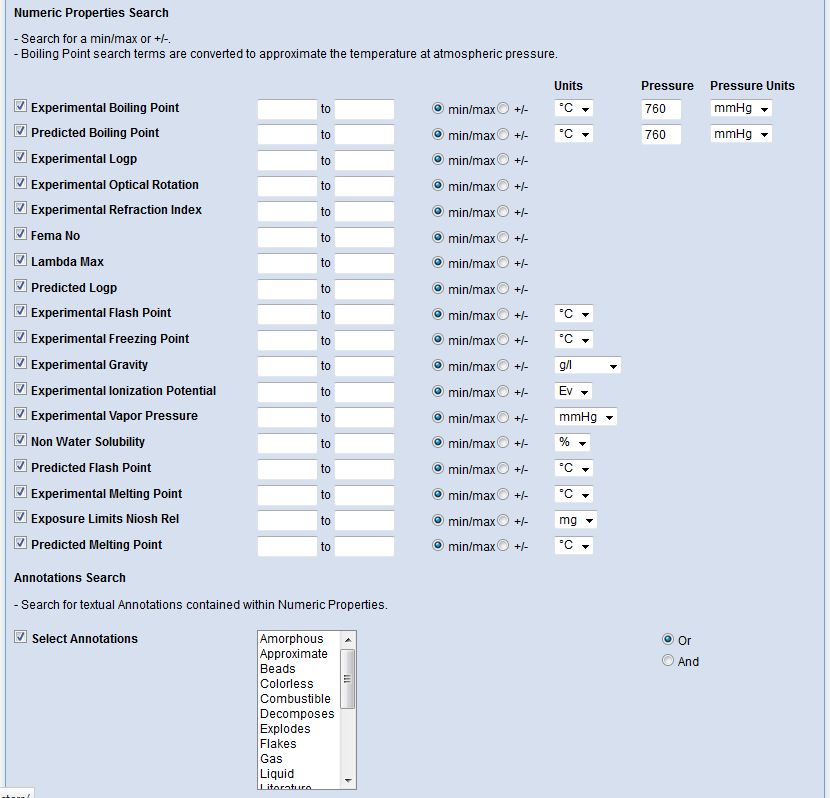Last time we told you about a number of improvements we have added to ChemSpider in the recent site updates, including combined substructure and properties search and searching by molecular formula ranges. As promised, this time we will cover how to search by properties like melting point or appearance.
Searching by Supplementary Information
Until now, although you could view properties when you were already on a record, there was no way to search by melting point, refractive index, appearance or bioactivity. This update has implemented a new search interface which allows you to search this data. You can now find compounds that are reported as being isolated from yeast, or compounds with a melting point of 32-35 °C.
There are 2 main parts to our Supplementary search interface.
Text Properties Search
Text properties include appearance, chemical class, drug status, or safety data. You can search any of these properties by using key words. When you start typing, a number of suggested search terms will appear, which can help you narrow down what search term to use.
You can also use wild cards by entering *, which can give you a little more flexibility in your search term – so if your unknown is a blue, crystalline material a search for “Blue crystal*” will turn up all records which mention the word “blue”, as well as any word beginning with “crystal” (such as crystals or crystalline).
Numeric Properties Search
Numeric properties include physical properties like experimental or predicted boiling point, optical rotation, or LogP. Since we draw data from a wide range of data sources, not all of this information is sent to us in the same format or with the units depicted the same way. In order to make it possible for you to search across all the properties in our database no matter how it was supplied to us, we have done a lot of background work on tidying up and standardizing this data.
All numeric properties can be searched using min/max or with a +/- range and the search term can be entered in a variety of units – eg. Fahrenheit or Celsius for temperature, or psi or mmHg for pressure. Because the boiling point of a material is dependent at the pressure at which the measurement is made and not all boiling points are measured at atmospheric pressure we have created a feature that attempts to compensate for this. It uses the Clausius-Clapeyron equation to create estimated (standardised) boiling points for searching, please remember this when looking at your results.
As you can see, you are able to search on a wide variety of experimental properties, including boiling point, LogP, melting point, specific gravity and solubility. Please note that although many of the more common compounds have some properties, these properties are only available on a subset of our records – so if you do not get a result on a property search, it might be that we haven’t added that information yet.
Hopefully this gives you a good idea of the improvements we’ve made to ChemSpider search, and how these new features make it easier than ever to find what you are looking for. See the following post for a case study that showcases several of the new features covered in these posts.



